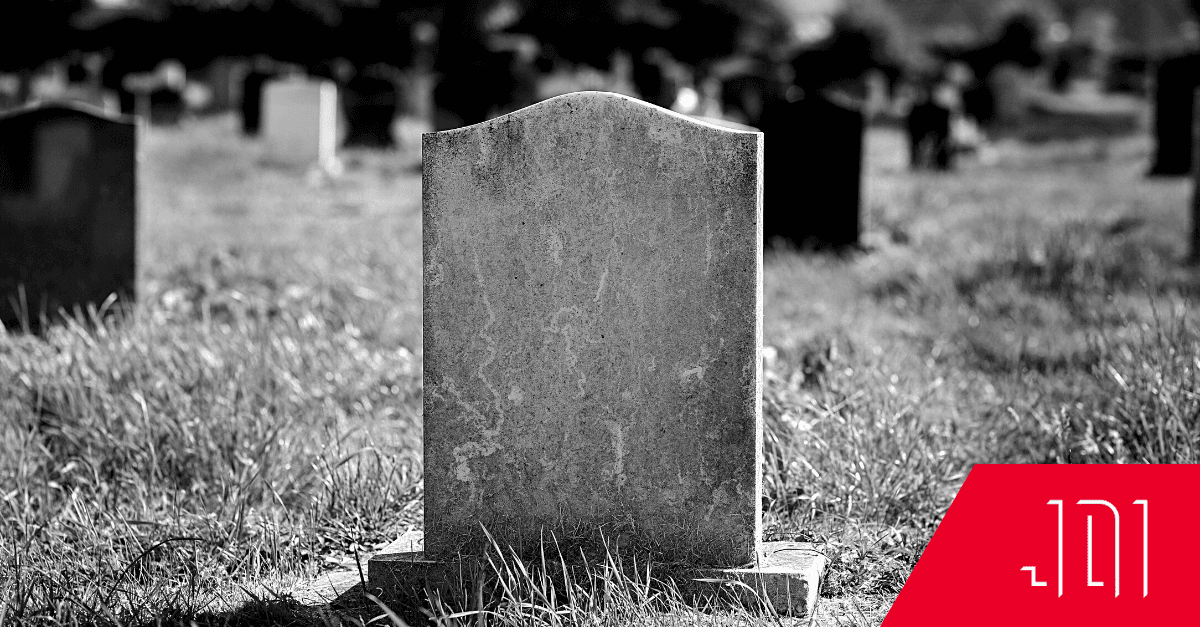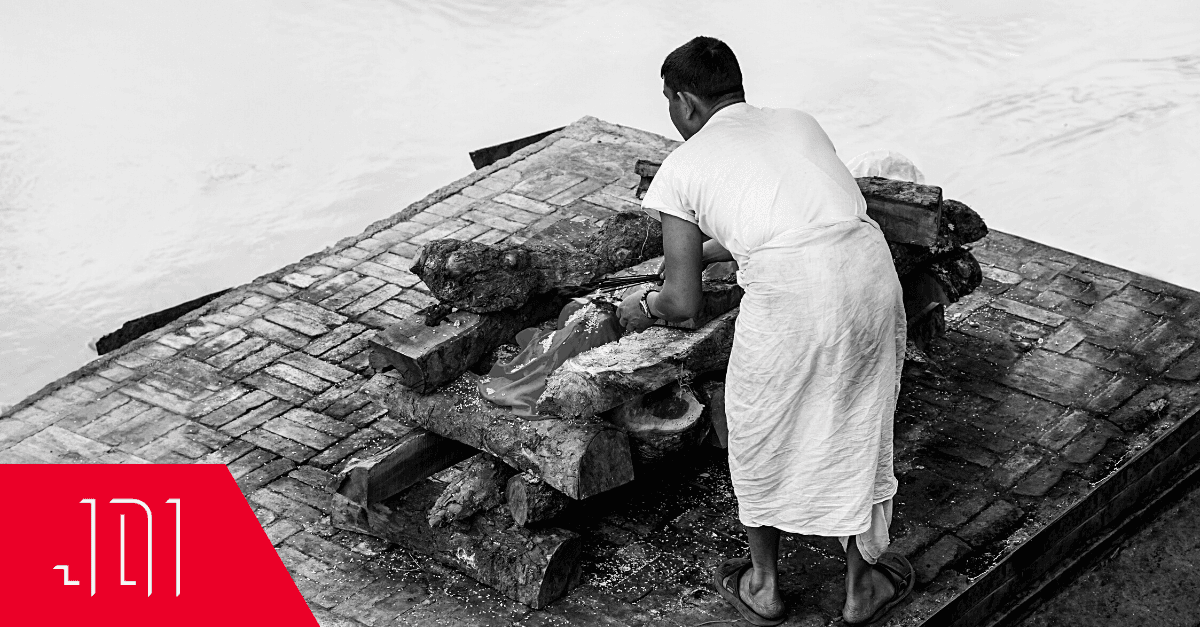What Do We Do With the Body?
When we think about technology, we usually think about advancements that are changing the nature of life on Earth — how we live, learn, commute, work, and communicate, just to name a few. But it can also change the nature of how we die. And it already is.
The Deathtech market includes companies and technology that are revolutionizing how we dispose of — or transform — human remains, how we grieve, and how we handle affairs from wills to managing social media profiles. And it is already valued at $120B.
All of these technologies are important and have tremendous potential, but I am especially interested in how we will manage and dispose of human remains.
A brief history of death
The so-called “Deathtech” market has only recently come to be, but the application of technology to human death isn’t. Finding the best answer to “What do we do with the body?” is one humans have been working on for millennia.
Dead bodies, historically, have been dangerous, and not because of disease or other contagions (except for very few cases). In the early days of civilization, a decomposing human body (and its smell) was a magnet for predators. Leaving the dead to lie where they died has never really been an option.
Over time, the life-or-death (heh) imperative of disposing of the body evolved in tandem with cultural and religious tradition, and the environmental limitations of the community. Bodies are buried to return them to the Earth; they are burned to ashes that family members keep (or spread); they are preserved so that they can transition to the afterlife (or post-rapture), or just make it to their viewing. Bodies in below-sea-level New Orleans are interred in mausoleums, lest a large flood bring them all out of the ground. Many in Tibet — with its rocky and impenetrable soil — are traditionally laid upon a mountaintop and weighed down with rocks, allowing the bodies to be scavenged by birds and dispersing the deceased into life in all directions.
Of course, the two most popular modern methods for disposing of human remains are burial and cremation, and where the lion’s share of innovation in deathtech is focused.
Modern Death
Let’s start with talking about burial. Humans have been digging graves and burying the deceased forever, but did so very quickly after the death to beat out decomposition as much as they could. The ritual was on a timeline.
Enter embalming.
I’m confident in saying that we are all at least somewhat familiar with embalming. We learned about the process in Ancient Egypt — who could forget learning that they stuck a metal rod up on the nose into the skull to scramble and drain the brains?! And I’d venture to say that most of us have attended a viewing and seen a friend or family member that looks like — but not quite exactly like — that person we knew when they were alive. We’ve come a long way.
The modern embalming techniques ubiquitous today came to be in the post-industrial era, and, in America, the Civil War. Thousands of troops died in the war, a long way from home. The wealthier families of the dead were willing to pay a premium to bring their loved ones home, but placing bodies in a tightly packed, hot railcar for a few days wasn’t feasible.
Although they were derogatorily referred to as vultures, embalmers with access to bulk chemicals (created thanks to technological advances) would perform field embalming (unsurprisingly results varied). A lot had changed from Ancient Egypt, but a lot of principles were the same, like removing the internal organs and blood. The practice moved beyond the battlefield and into common practice after the assassination of President Lincoln and the ensuing “funeral train” that followed.
At the same time that embalming, and the more lengthy death rituals it afforded, became ubiquitous, a man named Ludovico Brunetti was inventing modern cremation. After the creation of the small, controlled chamber that crematoriums use today, cremation’s popularity grew in spurts and slogs over the years. Cremation became especially popular during times when paranoia around the health dangers of the human body (which is almost completely unfounded) increased. Over the past century, cremation has gotten more and more popular — 59% of Americans who passed in 2022 were cremated.
Don’t fear the reaper (fear the bills instead)
As mentioned, how we care for the dead — and their bodies — is very much tied to cultural and religious tradition, the physical environment, and the capabilities provided by technology. When these variables change, what we do changes.
What we’re seeing now in deathtech is in line with cultural shifts. Fewer and fewer Americans consider themselves religious and thus are less likely to follow customary death traditions. Even those who do identify with a religion are less likely to follow precedent. 30-40% of Catholics are currently cremated, following the Catholic church lifting its ban on the practice in 1963.
Part of the reason that the Catholic church lifted its ban on cremation is because of cost, and that is also driving individuals to look into alternate death care options. A burial, including the plot, headstone, casket, vault, and viewing, averages around $10K. Even cremation (when paired with a viewing) averages around $7K.
Finally, our relationship with the environment is changing. More individuals are looking for eco-conscious death care that reduces the carbon footprint of traditional options. Traditional burials produce carbon emissions through the creation and transportation of the associated materials, take up valuable land area, and can endanger surrounding soil and water as the chemicals used to embalm the body leech out over time. Estimates say that every year in the US, cremations add 360,000 metric tons of carbon dioxide to the atmosphere. Roughly equivalent to the amount of emissions created by putting on the Olympics or flying Valentine’s Day flowers to the US every year.
Now, tell all this to someone, and you often get something back like this: “Well just wrap me in a sheet and throw me in the ground!” Ah, if only it was that easy. Unless it’s on your own land, this back-to-basics approach is illegal (in a few states, even private property burial is a no-go).
From wood and fire to dirt and water
So what’s a secular, cost-conscious, environmentally-minded person to do? Or, rather, have done to their body when they’re gone? There are two especially exciting alternatives that have emerged over the past decade or so.
The first is human compositing. Now, you may be thinking, “I thought you said you couldn’t just throw a body in the ground sans casket!” Well, just like throwing a cheeseburger in your backyard won’t create compost, putting a human body in your average plot of soil isn’t going to work either.
In 2013, Katrina Spade came up with the concept of human compositing — and how to do it — as part of her graduate school work. Also known as “natural organic reduction,” Katrina uses a proprietary mixture of wood chips, alfalfa, and straw. Her process — and available death care service at her funeral home Recompose in Seattle — reduces human bodies into soil in roughly 8-12 weeks. At the end of the process, the soil is returned to the family or can be donated to specific forest areas to truly return the departed to their brand of nature. The process differs significantly from traditional burial, but the person still ends up being one with the Earth. It’ll run you about $7K before any memorial or additional services like transportation or obituaries.
Traditional cremation is also in the midst of a makeover in the form of aquamation. As the name implies, the process uses water. And it uses it to dissolve the body.
During the process, a body is placed into a chamber (about the size of an above ground propane tank) and filled with a very hot (200-300 F) alkaline solution that dissolves the body and reduces the bones to a powdery substance akin to the ashes you’d get after a cremation. The process was actually created in the late 19th century but was developed as a way to make fertilizer from animal carcasses. The first aquamation chamber designed for a human wasn’t manufactured until 2005. Aquamation costs about $2-3K, which is actually slightly more than traditional cremation if you take away the embalming and viewing service that is frequently added to the latter.
We can expect the demand for these types of services to grow in the coming years, but we will also need policy changes for these options to take hold. Right now, human composting is legal in only a handful of states. Aquamation is legal in about half.
As technologies to dispose of the dead evolve, we can expect to see a lot of things change about death. But we can also expect a lot of things to remain the same. Rituals like viewings and wakes, memorial services, and the spreading of ashes — all of these will continue. For many, these new methods, which are better for the environment and (sometimes) cheaper, are more in line with the values they held while alive.
So. What are they going to do with your body?





